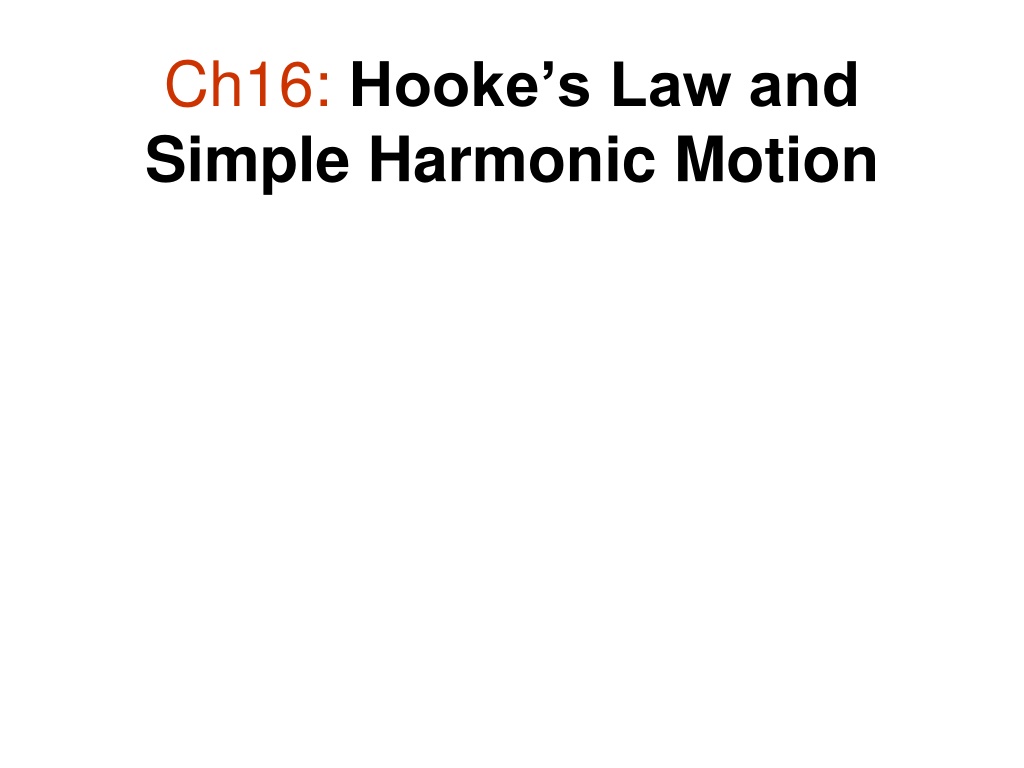
Understanding Hooke's Law and Simple Harmonic Motion
Explore the principles of Hooke's Law and Simple Harmonic Motion through examples and calculations. Learn about oscillating masses on springs, stored energy in springs, free-body diagrams, and simple pendulums. Discover how to determine forces, stretches, accelerations, and gravitational constants in physics problems.
Download Presentation

Please find below an Image/Link to download the presentation.
The content on the website is provided AS IS for your information and personal use only. It may not be sold, licensed, or shared on other websites without obtaining consent from the author. Download presentation by click this link. If you encounter any issues during the download, it is possible that the publisher has removed the file from their server.
E N D
Presentation Transcript
Ch16: Hookes Law and Simple Harmonic Motion
Mass of an Astronaut m = 2 . T k The spring used in one such device has a spring constant of 606 N/m, and the mass of the chair is 12.0 kg. The measured oscillation period is 2.41 s. Find the mass of the astronaut.
Ex.16.2 Calculating Stored Energy A Tranquilizer Gun Spring (a) How much energy is stored in the spring of a tranquilizer gun that has a force constant of 50.0 N/m and is compressed 0.150 m? (b) If you neglect friction and the mass of the spring, at what speed will a 2.00-g projectile be ejected from the gun?
A 10.1-kg uniform board is wedged into a corner and held by a spring at a 50.0 angle, as the drawing shows. The spring has a spring constant of 176 N/m and is parallel to the floor. a. Draw a free-body diagram for the board b. Find the force exerted by the spring. c. Find the amount by which the spring is stretched from its unstrained length.
The Simple Pendulum The period, T of a simple pendulum, of length L: ? ? ? = 2? Problem: At a location the period, T of a simple pendulum of length 1.95 m is found to be 2.81s. What is the acceleration due to gravity at this location, in SI units with 3 significant figures.
